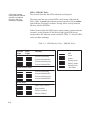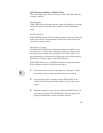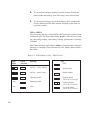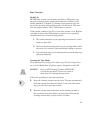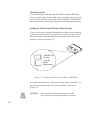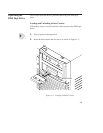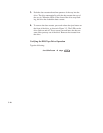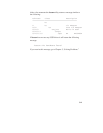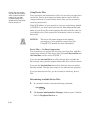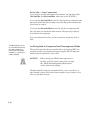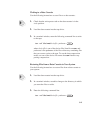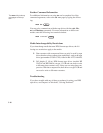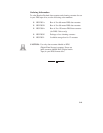
3-12
Using Device Files
Your system has four default device files for use with your tape drive:
two device files for noncompressed mode and two device files for
compressed mode. If you use these device files, you do not need to
create any device files.
If the SCSI address of your tape drive is not set to the factory default
of SCSI ID 3, you must create a device file, then substitute the path-
name of your device file in the examples that follow. Refer to the Sys-
tem Administration Tasks manual for information on how to create a
device file.
NOTICE: The device file names depend on the naming
conventions of your particular system. See your
Using HP-UX manuals for more information.
Device Files — No Data Compression
Your system has two device files for using your tape drive with data
compression turned off. The device files are named /dev/rmt/3m and
/dev/rmt/3mn, and are set for SCSI ID 3.
If you use the /dev/rmt/3m device file, the tape drive rewinds the
data cassette every time the system releases the drive from its control.
If you use the /dev/rmt/3mn device file, the drive does not rewind
the data cassette. The tape stays where it was after the last operation.
If you use these device files, you do not need to create any device
files.
Determining Available Device Files
1. In a terminal window, enter the following command:
sam
Enter
2. The System Administration Manager window opens. Double–
click on Peripheral Devices –>.
Device files are special
files that tell your system
which system hardware
pathway to use when
communicating with a
specific device and what
kind of device it is.



